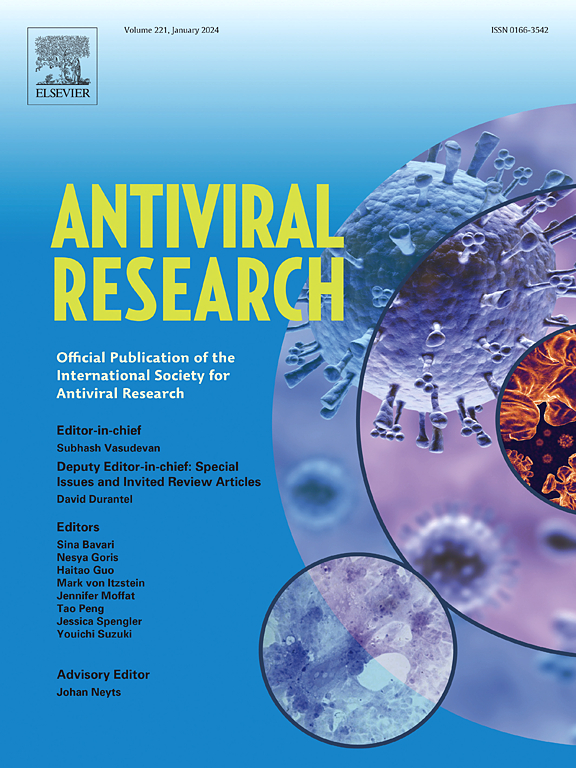鼻内接触黏液罗氏共生菌可预防甲型流感病毒感染。
IF 4.5
2区 医学
Q1 PHARMACOLOGY & PHARMACY
引用次数: 0
摘要
呼吸道承载着多种多样的微生物群落,其组成随解剖位置和整个生命而变化。粘胶罗氏菌(rosia mucilaginosa)是一种常见的上呼吸道和口腔共生体,最近被认为具有抑制细菌引发的促炎反应的能力。然而,它在调节对病毒感染(如甲型流感病毒肺炎)的免疫反应中的作用仍不清楚。在本研究中,我们在流感肺炎小鼠模型中证明,黏液假单胞菌增强了对IAV的保护,促进病毒清除,减轻炎症,保护支气管和肺泡结构,并提高了生存率。在R. mucilaginosa处理的小鼠中观察到的增强的病毒清除与先天性免疫细胞向肺部的募集有关,包括表达pd - l1的中性粒细胞,以及抗炎细胞因子IL-10的产生,这两种细胞因子都在IAV感染的背景下发挥调节作用。综上所述,这些发现强调了黏液胞杆菌介导的先天免疫启动是呼吸道对抗IAV感染的关键保护机制。本文章由计算机程序翻译,如有差异,请以英文原文为准。

Intranasal exposure to commensal bacterium Rothia mucilaginosa protects against influenza A virus infection
The respiratory tract hosts a diverse microbial community whose composition varies with anatomical location and throughout life. Rothia mucilaginosa, a common commensal of the upper respiratory tract and oral cavity, has recently been recognized for its ability to inhibit bacteria-triggered pro-inflammatory responses. However, its role in modulating the immune response to viral infections such as influenza A virus (IAV) pneumonia, remains unknown. Here, we demonstrate that R. mucilaginosa enhances protection against IAV, promoting viral clearance, reducing inflammation, preserving bronchial and alveolar structures, and improving survival in a mouse model of influenza pneumonia. The enhanced viral clearance observed in R. mucilaginosa-treated mice is associated with the recruitment of innate immune cells to the lungs, including PD-L1-expressing neutrophils, alongside the production of the anti-inflammatory cytokine IL-10, both of which are known to play regulatory roles in the context of IAV infection. Together, these findings highlight R. mucilaginosa-mediated innate immune priming as a key protective mechanism in the respiratory tract against IAV infection.
求助全文
通过发布文献求助,成功后即可免费获取论文全文。
去求助
来源期刊

Antiviral research
医学-病毒学
CiteScore
17.10
自引率
3.90%
发文量
157
审稿时长
34 days
期刊介绍:
Antiviral Research is a journal that focuses on various aspects of controlling viral infections in both humans and animals. It is a platform for publishing research reports, short communications, review articles, and commentaries. The journal covers a wide range of topics including antiviral drugs, antibodies, and host-response modifiers. These topics encompass their synthesis, in vitro and in vivo testing, as well as mechanisms of action. Additionally, the journal also publishes studies on the development of new or improved vaccines against viral infections in humans. It delves into assessing the safety of drugs and vaccines, tracking the evolution of drug or vaccine-resistant viruses, and developing effective countermeasures. Another area of interest includes the identification and validation of new drug targets. The journal further explores laboratory animal models of viral diseases, investigates the pathogenesis of viral diseases, and examines the mechanisms by which viruses avoid host immune responses.
 求助内容:
求助内容: 应助结果提醒方式:
应助结果提醒方式:


